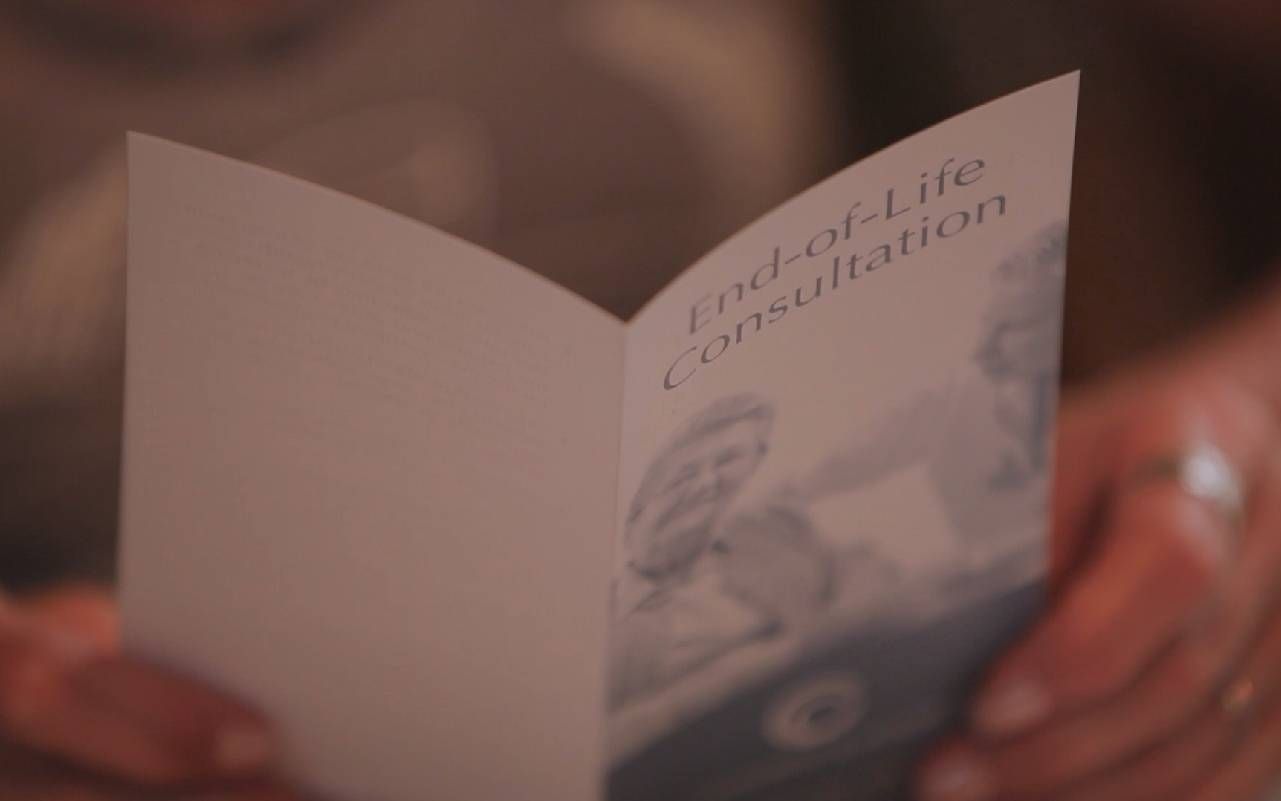— More states and countries are enacting laws to let terminally ill patients in great pain decide for themselves when to die

In January, just a few days after the start of 2023, a woman walked into the Daytona Beach, Florida, hospital where her terminally ill husband was a patient and shot him. She said she intended to kill herself as well, but hospital staff stopped her before she could carry out the second part of her plan.
Ellen Gilland told police the shooting was by mutual consent, that she and her husband agreed that it was the best way for them to handle his decline in health. He was too weak to take his own life.

Only 10 states and the District of Columbia have laws that allow medical assistance in dying by making a lethal dose of medication available to adult patients who request one. The practice also is legal in Montana because of a court ruling.
Medically assisted deaths are illegal in all other states and U.S. territories, including Florida. No jurisdiction permits the use of firearms to end a human life.
Words Matter
Medical aid in dying is not euthanasia. The latter term includes the act of one person killing another who is terminally ill or hopelessly injured and suffering great pain. Euthanasia is illegal throughout the United States. However, if the person who is dying self-administers, the act is not considered euthanasia.
Only 10 states and the District of Columbia have laws that allow medical assistance in dying by making a lethal dose of medication available to adult patients who request one.
In the U.S., terminology has evolved. The current acceptable wording is “medical aid in dying” or “medical assistance in dying” indicating that a medical professional will make a lethal dose of one or more drugs available to the patient but leave it to the patient to decide whether to take it. The terms are abbreviated as MAID.
The word “suicide” is not accurate, although is it sometimes incorrectly applied. Death certificates state a patient’s underlying illness as cause of death.
Although 22% of Americans have access to medical aid in dying, fewer than 1% of people in the 10 states and Washington, DC, where this option is legal actually obtain the medication, and only two-thirds of them ultimately decide to take it, according to Compassion and Choices, a nonprofit group that advocates for end-of-life options including, but not limited to, medical aid in dying.
Where It Is Legal in the U.S.
In addition to reaching a consensus on the language describing medical aid in dying, the 11 jurisdictions that authorize the practice are consistent in their intent, said Kim Callinan, president and CEO of Compassion and Choices.
“Most of the laws across the states are very similar,” she said. “The eligibility criteria are the same. And the safeguards are the same.”
Geoff Sugerman, who served as campaign manager for Oregon’s Death with Dignity law, which was enacted in 2012, and works closely with the national organization called Death with Dignity, laid out the four cornerstones of the laws in in the 11 jurisdictions:
- Patients must be adults with a terminal illness and a prognosis of six months or less to live.
- Attending physicians must verify patients are acting voluntarily.
- Patients must be able to make and communicate their decision to health care providers.
- Patients must be able to self-administer (ingest) the medication.
Differences Among Laws
There are some differences in the laws. Where it is legal, a common waiting period for approval of medical assistance in dying is 15 days. Hawaii mandates 20 days. New Mexico and Oregon are less than 15 days. In California, a 2022 adjustment to the law reduced the time from 15 days to 48 hours.

Most medically assisted deaths are limited to residents of states that have legalized the procedure. However, the Vermont legislature in April passed a bill that would eliminate the residency requirement; Gov. Phil Scott has said he would sign it into law. Meanwhile, Oregon officials have said the state will not prosecute non-resident cases.
The number of states considering medically assisted death continues to grow. Minnesota and Florida have bills in their legislatures.
Fine-Tuning Legislation
While some states debate new MAID laws, others are weighing changes to existing laws. As public opinion adjusts and data is collected, legislators in several states are considering amendments. Some details in the original laws may have “served as barriers to the patient,” Sugerman explained.
Changes to legislation may include the length of the waiting period and expanding the definition of “medical professional” to include Physician Assistants and Nurse Practitioners. Some states may remove their residency requirements so that patients can travel from other jurisdictions for the process.
Details and updates about state legislation are available through Compassion and Choices and Death with Dignity.
Complete Article ↪HERE↩!
